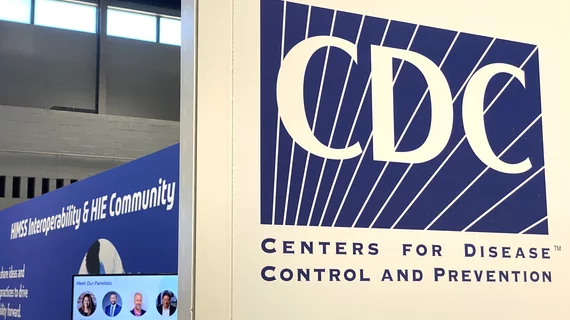CDC highlights radiology’s critical role in striving for ‘hospital diagnostic excellence’
The Centers for Disease Control and Prevention is highlighting radiology’s critical role in striving for “hospital diagnostic excellence.”
DxEx, as the CDC calls it for short, encompasses practices to improve this process, ensuring that imaging and other tests are ordered, interpreted, communicated and acted on appropriately. The agency worked to create this new “Core Elements of Hospital Diagnostic Excellence” document in consultation with federal partners, the Agency for Healthcare Research and Quality, and CMS.
Experts noted that these programs help providers to prioritize the right diagnoses, engage the correct stakeholders, implement improvement strategies and continuously monitor change.
“A DxEx program may also lead to cost savings through more efficient care,” the CDC reported Sept. 17. “Programs require leadership from a physician and a laboratory and/or radiology testing expert supported by the hospital leadership, as well as a diverse team of professionals, including frontline clinicians and nurses, patient safety, quality improvement, informatics and other disciplines. Engagement with patients, their families, and caregivers is essential to the success of these programs.”
The CDC detailed six core elements of DxEx, including: (1) hospital leadership commitment and accountability; (2) multidisciplinary expertise; (3) patient, family and caregiver engagement; (4) action; (5) education and (6) tracking and reporting. Under No. 2, the agency urged hospitals to appoint radiology or lab experts as co-leads to provide knowledge about proper use of diagnostics. A second co-leader should be a generalist physician, with both champions allocated time and resources to manage the DxEx program.
Radiologists and other imaging staffers can serve as consultants to improve appropriate ordering, aid in interpreting results and optimize reporting to guide best practices. Members of the department also can guide discussions on potential implementation of new imaging tests that impact diagnostic excellence and collaborate with program personnel to develop guidance when changes could impact clinical decision-making.
“Interpreting the combined output of diagnostic testing across the fields of imaging, pathology, clinical laboratory medicine, genomics, medical informatics, and information technology has been referred to as ‘integrative diagnostics’ and may improve diagnosis,” the CDC noted. “Laboratory and radiology testing experts should engage key partners throughout the hospital and healthcare system.”
The agency detailed some potential priority examples on which hospitals and radiology departments can focus. Imaging experts could work to facilitate understanding of commonly used exams ordered for similar reasons and emphasize the differences between these options. They also can facilitate interaction between radiology and other specialties through tumor boards or visiting other departments to participate in case discussions.
Experts emphasized the importance of gaining buy-in from the C-suite to ensure program success, with failure to secure necessary resources a barrier.
“Commitment and accountability from the hospital's senior leadership are essential and include support from the chief medical officer, chief quality or safety officer, chief nursing officer, and directors of pathology, laboratory services and radiology,” the CDC noted. “Achieving diagnostic excellence is consistent with the mission, values, and goals of all hospitals. Resource investments in DxEx programs, such as support for other safety aspects and clinical care delivery focused on improving quality and patient experience, are essential.”

